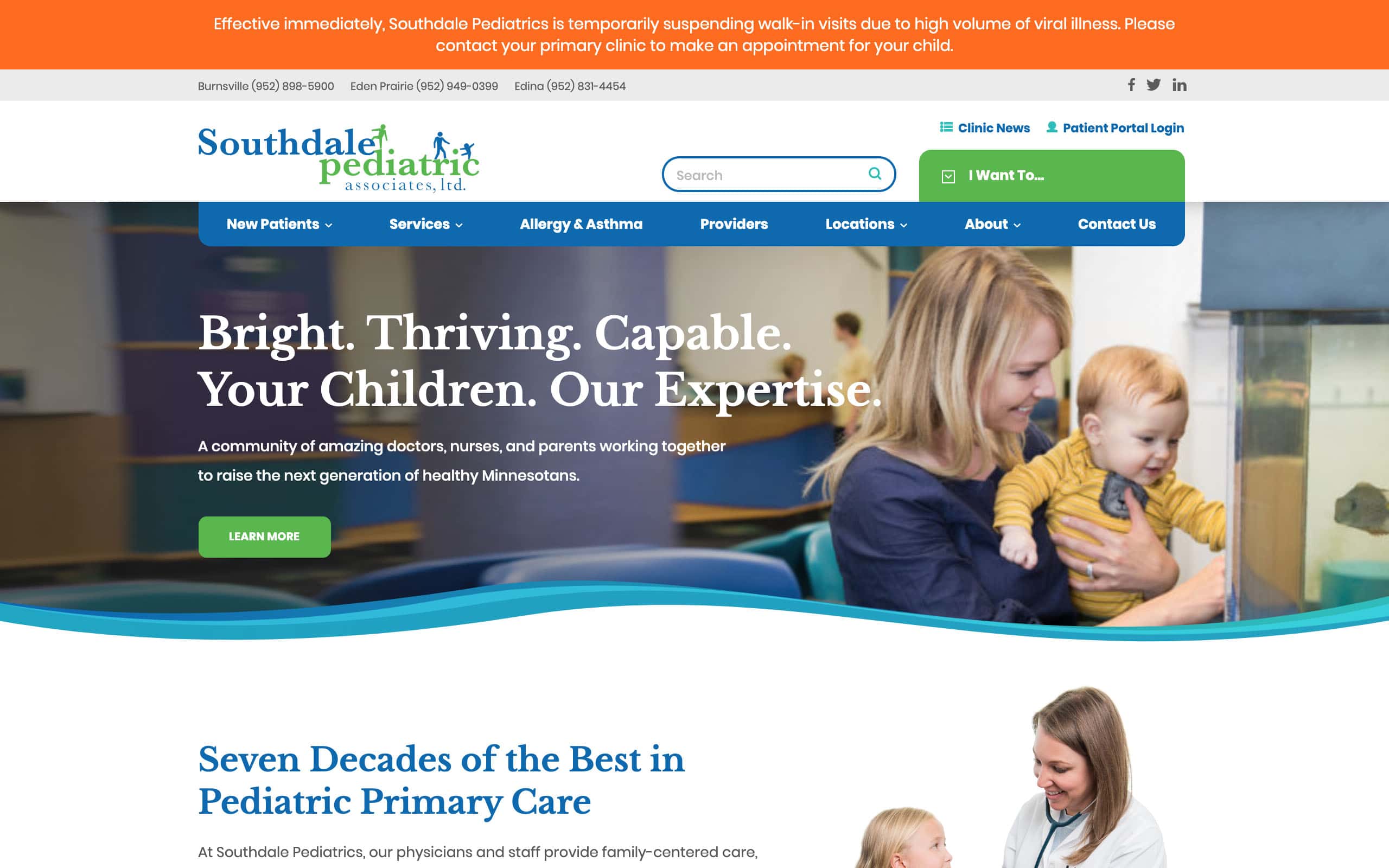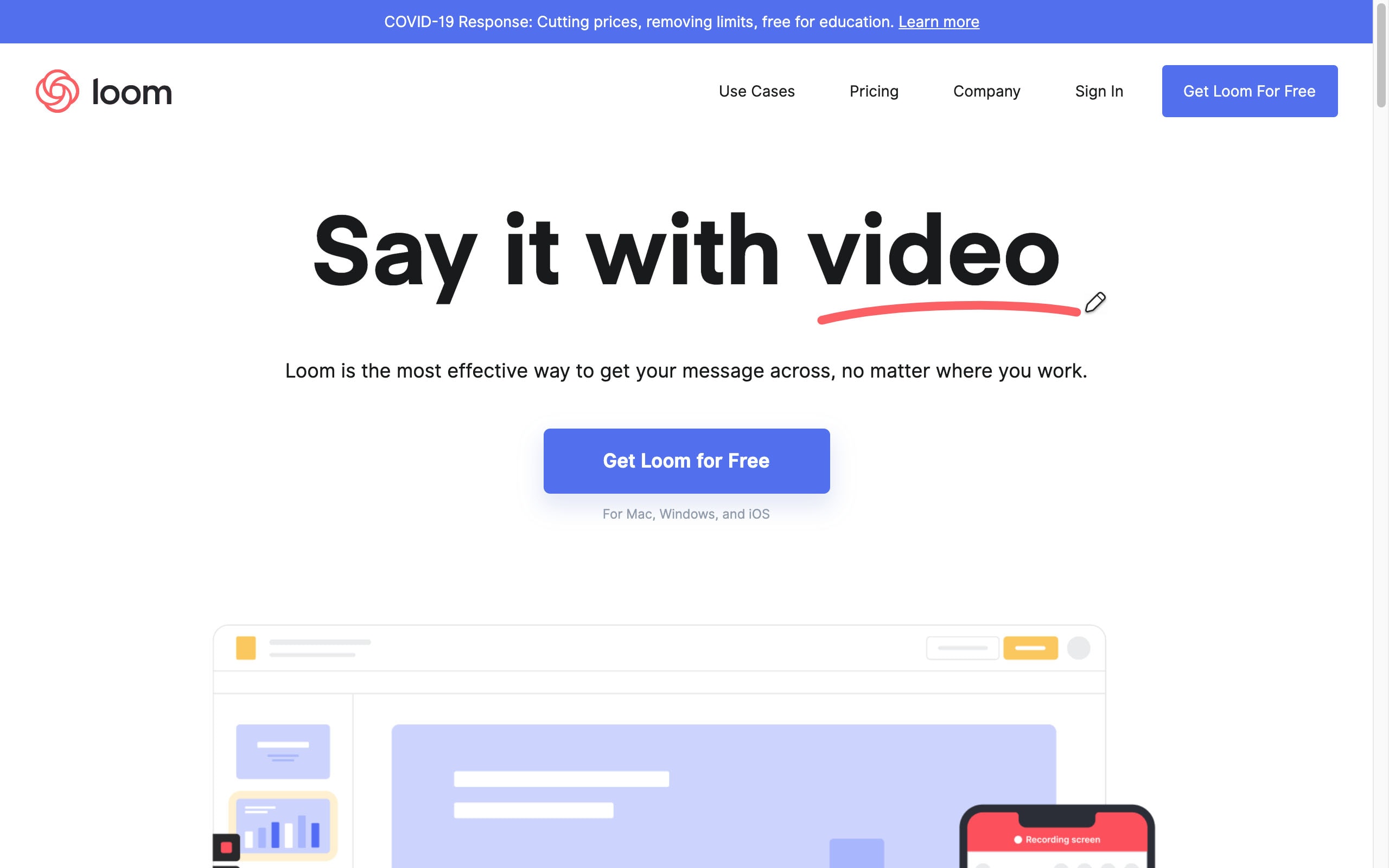How to Share Essential COVID-19 Communications with B2B Customers

Over the past few days, many of our clients have requested our support to help them with communicating critical COVID-19 messaging to their clients. We’re sharing some of the best practices we’re noticing, to help our greater community.
Use your website as a platform to communicate critical changes and assurances of coverage.
Many clients are implementing simple alert banners at the top of their websites with a short message that informs visitors of logistical changes or notices, especially regarding offices and other facilities. The banners also link to pages with additional information. If you need to communicate assurances, changes or policy updates — especially regarding physical locations — website banner alerts are an ideal vehicle. Note the orange and blue bars at the top of both website examples below. Don’t overwhelm your homepage or make this message more visible than your positioning statement, but do use a contrasting color, or one that matches your primary CTA, to attract attention.
Some websites already have the tooling in place to create messages like these, which makes it easy to add new content features within your CMS. If not, your web team can quickly create an alert bar that can be edited, and toggled on and off from within your CMS.
As a plan C, look at your homepage and determine what secondary messaging area could be easily edited within the CMS to house this communication. Be sure to keep this information above the fold (i.e. on the initial view in the browser window), while not overwhelming your hero banner or primary positioning message (For more clarity around these terms read this article about the anatomy of a b2b homepage). We have a temporary situation that needs addressing, but business is still being conducted and your branding is the most important component of your homepage.
Email communications that assure business continuity, and what to expect.
Most B2B businesses already have tools in place to send marketing emails or newsletters. Use this platform to email messages conveying your policies around safety, business continuity, inventory or supply chain updates, and any changes that customers or vendors should expect. Note, this isn’t the time to market your services, so avoid promotional-sounding language and tone. Focus on critical information that conveys trust, and provides pertinent information that’s helpful to your audience. Social media is fine as a secondary channel for this form of messaging. However, due to social media’s more informal, casual tone, and lower adoption rates by B2B businesses, don’t use it as your primary vehicle for distributing critical messages.
If you don’t yet have a ready-to-go email marketing system and list, use the free tools readily available through systems like MailChimp or HubSpot. (Note: for MailChimp the intro level is free, but we recommend the $9.99 plan for B2B businesses, so that you can remove the MailChimp logo from your messages. HubSpot has recently added email marketing to their free plans.) With both services, you can quickly select a simple template, add your logo, and send out a message within a few hours’ setup time. Note that you’ll have better deliverability rates (an important email metric) by taking a bit of extra time to validate SPF and DKIM records (these are related to your domain’s DNS, and essentially tell the email recipient’s server that they can trust the message, thereby giving it a higher probability of it landing in their inbox.)
Since time is critical in sending emails, I recommend you have someone craft the message while others set up the tooling and gather email addresses. If you’re collecting email addresses from spreadsheets and inboxes instead of using a CRM, this may take some time. But to expedite the process, apply the 80/20 rule: Send it out when you believe you have 80% of your list accounted for. You can always follow-up with a second mailing if necessary. It’s best practice to segment audiences and personalize emails, but that could slow you down here, so keep things general if you’re starting from scratch.
In addition to communicating with your customers via email, we recommend you post a page on your website or blog, which you can use to keep visitors updated with key information or changes. Here’s an example of ours, which you’re welcome to use and adapt to your business. You’ve no doubt seen countless others within the past week or so in your inbox. This article at Almanac rounds up advice and guidance around everything from remote work policies to keeping your office healthy and clean. You’ll also find helpful information for communicating with employees and customers about COVID-19, including language to avoid, and language to use.
Keep calm and carry on
ITR Economics presented a timely webinar on March 13th on the topic of COVID-19 and its probable impact on the economy. Download the recording here. There’s a lot of great information in the presentation, which puts things in perspective in the grand scheme of things. Overall, ITR’s expectation is that Americans will continue to buy, as Americans tend to do. Despite a short period of disruption, the overall economy is fully expected to return to its general trend. For those related to the hospitality industry, it’s already becoming clear that this will hurt more in the short term. Not surprisingly, alcohol tends to do well in times like this. Supply chains coming from China are already coming back. I expect that businesses with a heavy trade show allocation in their marketing budgets will likely see the shift toward digital, which is already in motion, escalated throughout the B2B industry.
The recommendations in this email are intended to be things that you can complete on your own. Your existing web and marketing team should be able to help implement any of these suggestions in short order, but we’ve recently waived our minimum project fees and prioritized our resources to help anyone who needs assistance in communicating critical information digitally.
Please reach out if you’d like help creating your company’s COVID-19 messaging, even if it’s just a quick phone call and some free advice.
Stay safe and be well!
P.S. If you’ve already done all of these things, and are starting to wonder how you’ll make up for your missed or canceled trade shows, read this article on easy, low cost ways to pivot to digital marketing to make up for canceled trade shows, and start thinking now about how you can use video, LinkedIn, ABM, digital marketing and your website to create a virtual experience. Amazon may be sold out of toilet paper for the moment, but they still have this $5 tripod that could be the lynchpin to getting some useful, nimble videos online. We’ll see sales and marketing get even more aligned and even more digital over the coming months. If you’d like guidance on where to start, see our Digital Marketing Strategy Quick Start plan.




